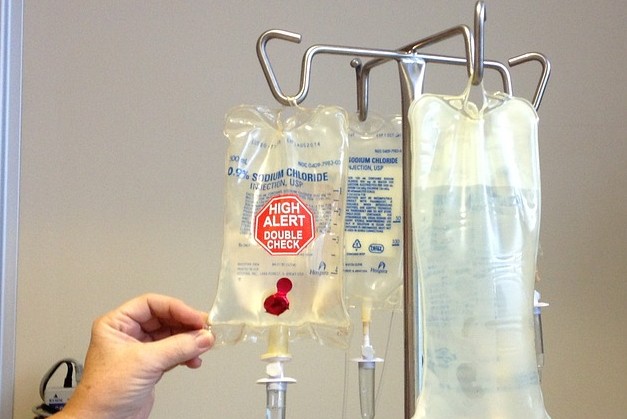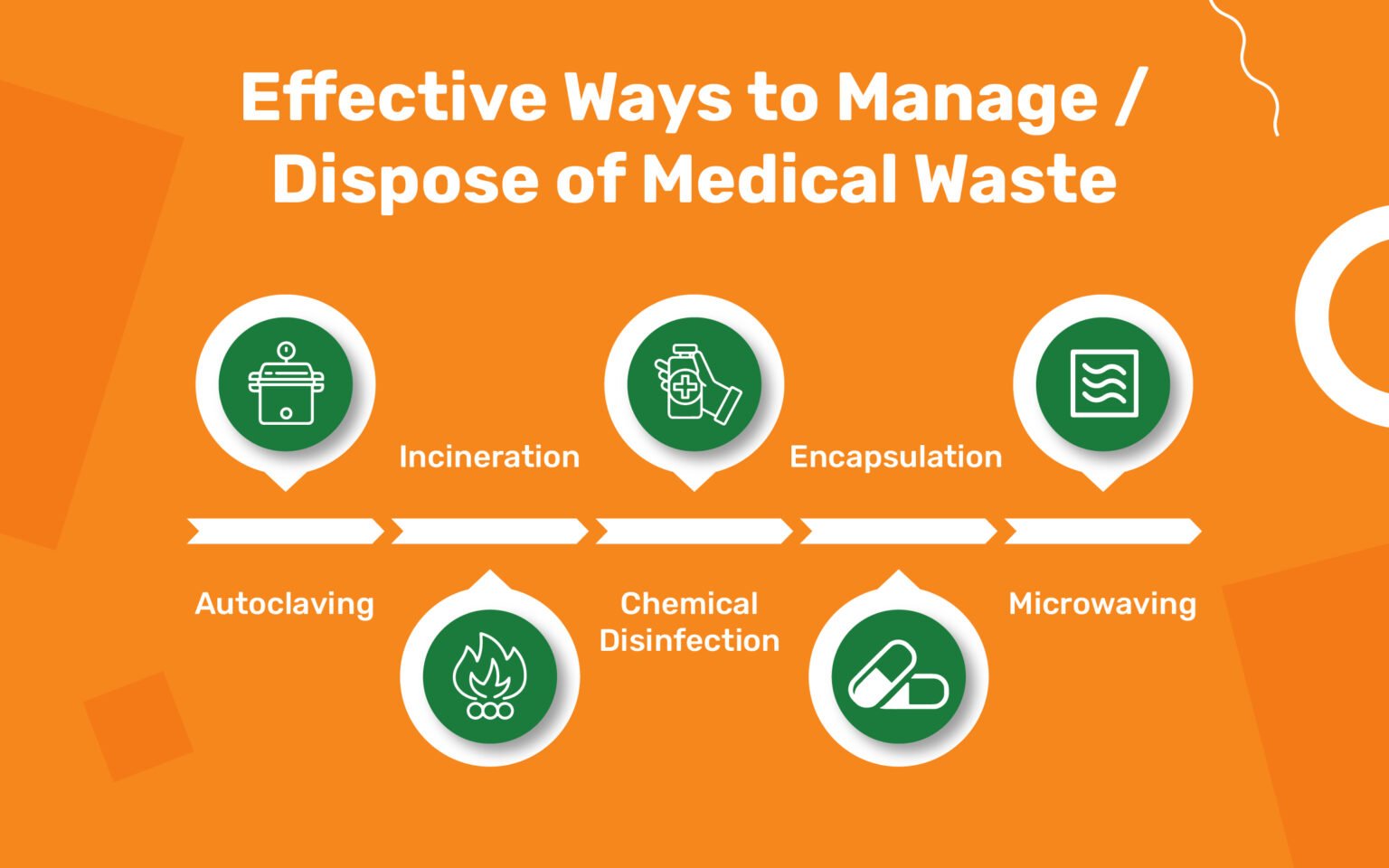Your Trusted Partner: Medical Waste Removal Services Tailored to Your Requirements
Wiki Article
Reliable and Eco Friendly Medical Garbage Disposal Solutions
In the ever-evolving area of medical care, the problem of clinical waste disposal continues to be a topic of vital importance. As medical facilities, facilities, and other health care centers make every effort to offer quality client treatment, they have to also deal with the difficulty of efficiently and properly disposing of their waste.Waste Segregation Practices
Reliable waste segregation techniques are necessary to ensure the correct and safe disposal of medical waste. Medical waste, which includes materials infected with potentially transmittable substances, should be handled in such a way that minimizes the risk of harm to both public health and the environment. Proper waste segregation plays a critical duty in attaining this objective.Waste partition entails the splitting up of various sorts of waste based upon their qualities and potential dangers. This procedure makes sure that each sort of waste is dealt with and taken care of suitably (medical waste disposal services with WasteX). It starts at the point of generation, where medical care facilities should have marked containers and containers for different waste groups, such as sharps, contagious waste, pharmaceutical waste, and non-hazardous waste
By segregating clinical waste at the source, medical care carriers can stop cross-contamination and reduce the danger of exposure to transmittable representatives. This technique likewise facilitates the recycling and recuperation of specific materials. Setting apart and recycling clean plastics and glass decreases the need for raw materials and lessens the ecological impact of medical waste disposal.

Autoclaving and Sterilization Methods
In order to make certain the safe and proper disposal of medical waste following effective waste segregation practices, healthcare facilities must utilize autoclaving and sanitation methods. Autoclaving is an extensively made use of method that utilizes high-pressure vapor to sanitize medical waste. This procedure entails positioning the waste in a chamber and subjecting it to a mix of heat and stress, which properly kills bacteria and makes the waste safe for disposal. Autoclaving is particularly effective in sanitizing items such as medical tools, lab devices, and specific types of medical waste that can hold up against heats. medical waste disposal services with WasteX.This involves treating the waste with chemicals such as ethylene oxide or hydrogen peroxide, which eliminate bacteria by interrupting their cellular structure. It is important to note that chemical sterilization requires proper handling and disposal of the chemicals utilized, as they can be dangerous to human health and the environment if not managed correctly.
On-Site Waste Treatment Systems
Healthcare facilities have actually applied on-site waste therapy systems to resolve the disposal of clinical waste in a effective and safe manner. These systems provide a practical and affordable remedy for taking care of clinical waste created within the center. On-site waste treatment systems make use of different technologies to dispose and deal with of medical waste on-site, minimizing the need for transport to off-site centers.One commonly made use of on-site waste treatment system is the microwave modern technology. This innovation utilizes microwave energy to decontaminate and sterilize clinical waste, minimizing its volume and rendering it secure for disposal. Another system is the chemical disinfection modern technology, which includes treating clinical waste with chemicals to kill microorganisms and decrease its unsafe nature. This technique is particularly effective for fluid clinical waste.
On-site waste treatment systems offer a number of benefits. They remove the risk of medical waste being messed up throughout transportation, minimizing the possibility for contamination and direct exposure to harmful substances. Additionally, these systems help medical care facilities follow waste management policies by offering a practical and effective disposal approach. In addition, on-site therapy systems lower the total ecological impact of medical waste by reducing transportation and the need for land Get the facts fill room.
Recycling and Repurposing Efforts
As healthcare facilities pursue sustainable waste management practices, they are increasingly exploring recycling and repurposing efforts as a method of lowering the ecological effect of medical waste. Recycling and repurposing initiatives entail discovering ingenious methods to reuse or change clinical waste into new items or products. This her comment is here not only helps to decrease the quantity of waste that ends up in incinerators or landfills yet additionally minimizes the consumption of basic materials and power required for manufacturing brand-new items.
One instance of recycling in the health care sector is the reprocessing of single-use clinical tools. This not only minimizes the quantity of waste produced yet also saves medical care facilities considerable prices connected with acquiring brand-new devices.
An additional reusing effort entails the recycling of plastic containers, such as drug bottles or syringe cases. These containers can be accumulated, sorted, and sent out to recycling centers where they are refined, thawed down, and transformed into new plastic items. This aids to save sources and minimize the demand for virgin plastic production.
Along with recycling, repurposing initiatives include locating different uses for medical waste. Shredded paper waste from medical records or packaging products can be repurposed as bed linens product for animals or as insulation material. Natural waste such as food scraps from healthcare centers can be composted and made use of as plant food in yards or farming areas.

Renewable Energy Solutions
One efficient method to alleviating the ecological effect of health care operations involves implementing renewable power remedies. Healthcare facilities, such as clinics and health centers, eat substantial amounts of energy for different purposes, consisting of lighting, home heating, cooling, and operating medical devices. By transitioning to sustainable energy resources, these facilities can considerably reduce their carbon impact and add to a more lasting future.

Implementing renewable resource services in health care facilities not only minimizes greenhouse gas exhausts yet additionally offers long-lasting expense savings. While the initial investment in renewable resource facilities might be higher, the lasting operational expenses of renewable resource systems are substantially reduced compared to typical fossil fuel-based power resources. Additionally, renewable resource systems are reliable and can give a uninterrupted and stable power supply, ensuring constant medical care solutions even throughout power outages or emergencies.
Final Thought
In conclusion, carrying out efficient and eco friendly clinical waste disposal solutions is necessary for maintaining a lasting healthcare system. By adopting waste partition techniques, autoclaving and sterilization strategies, on-site waste treatment systems, recycling and repurposing campaigns, and renewable energy remedies, healthcare centers can significantly minimize their ecological impact.It starts at the point of generation, where healthcare centers should have assigned containers and containers for various waste categories, such as sharps, infectious waste, pharmaceutical waste, and non-hazardous waste.
In order to make sure the appropriate and secure disposal of clinical waste following efficient waste segregation methods, medical care centers must utilize autoclaving and sanitation strategies.Medical care centers have actually executed on-site waste treatment systems to attend to the disposal of clinical waste in a secure and reliable manner. On-site original site waste treatment systems use different modern technologies to get rid of and deal with of clinical waste on-site, decreasing the demand for transportation to off-site centers.
As medical care centers make every effort for lasting waste management practices, they are progressively checking out recycling and repurposing efforts as a way of decreasing the environmental effect of clinical waste. - medical waste removal service
Report this wiki page